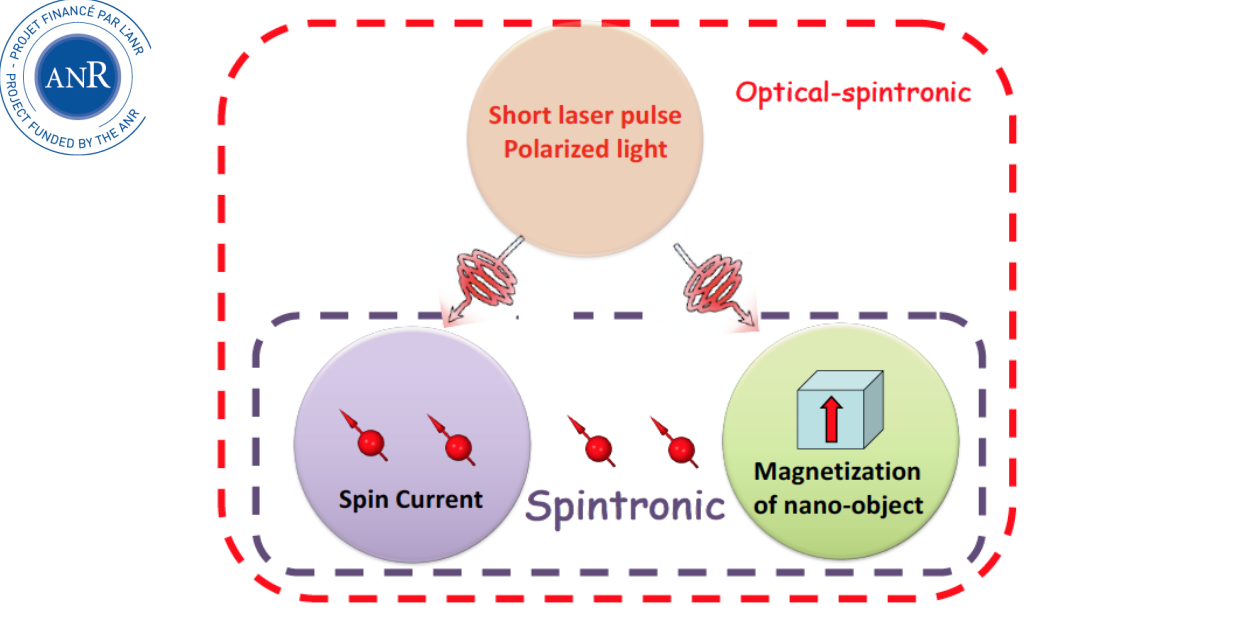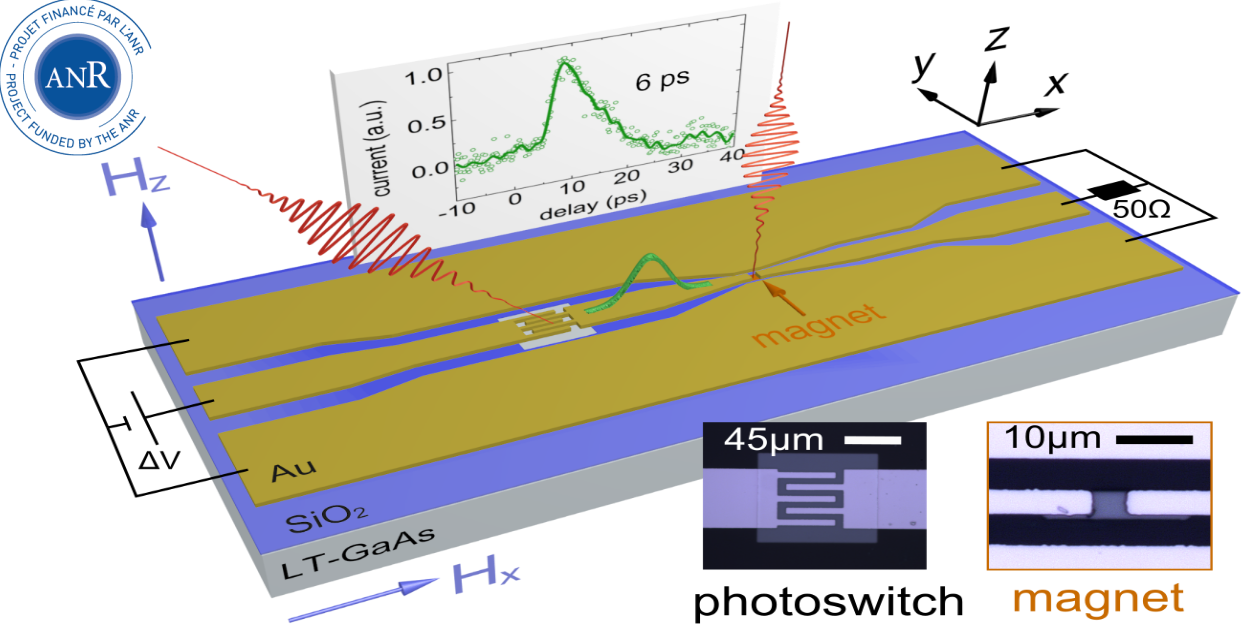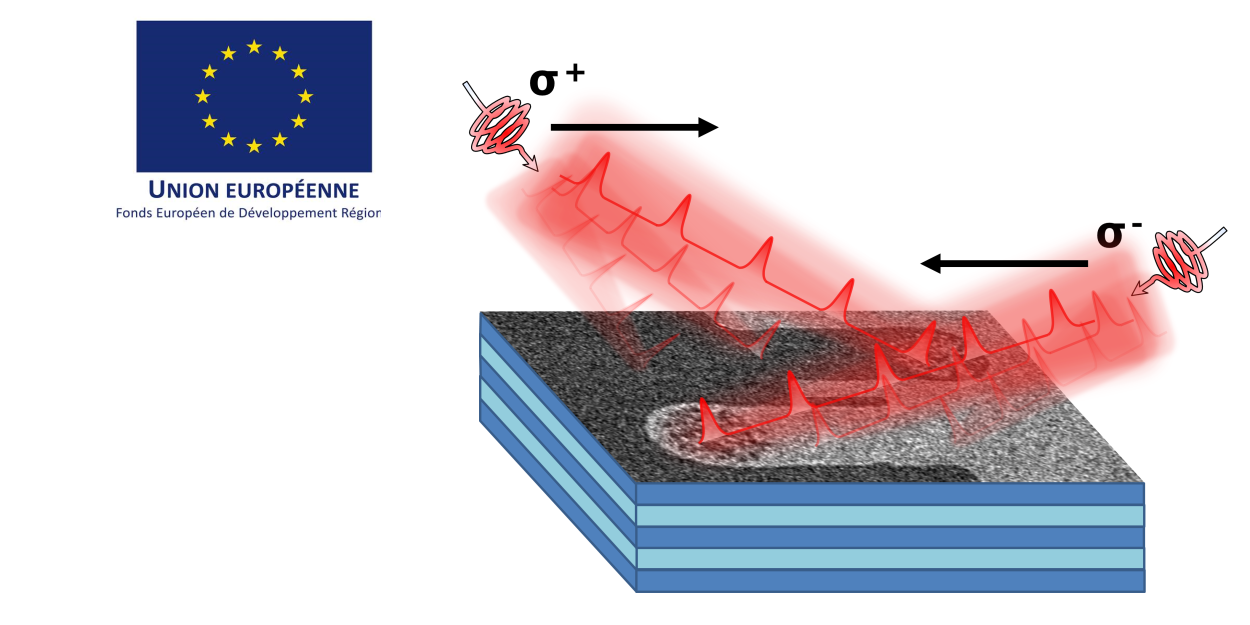Magnetization Dynamics

Overview
Research on the magnetic properties of materials requires being able to probe magnetism at different time scales. In the team, a very wide range of times can be covered, from second to femtosecond (10-15s), which makes it possible to investigate the role of different interactions. The temporal evolution of demagnetization, reversal or precession of magnetization in thin magnetic layers can be investigated, allowing exploring magnetization manipulation under a large variety of stimulus.
Research Interests
Resonant (GHz) Dynamics
In or group we perform broadband ferromagnetic resonance experiments on various magnetic materials, in order to extract a number of magnetic properties such as damping, spin-orbit torques, anisotropy fields…
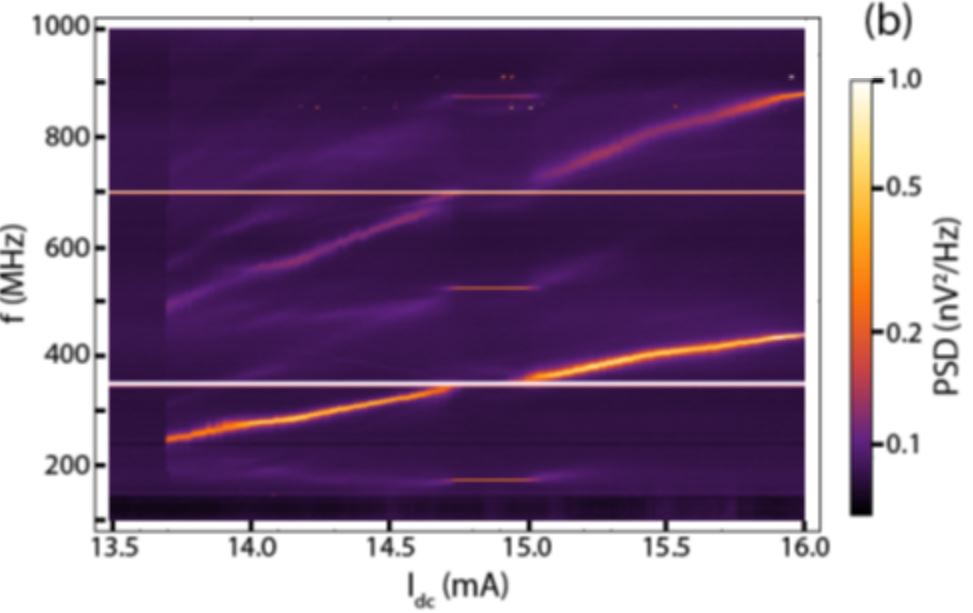
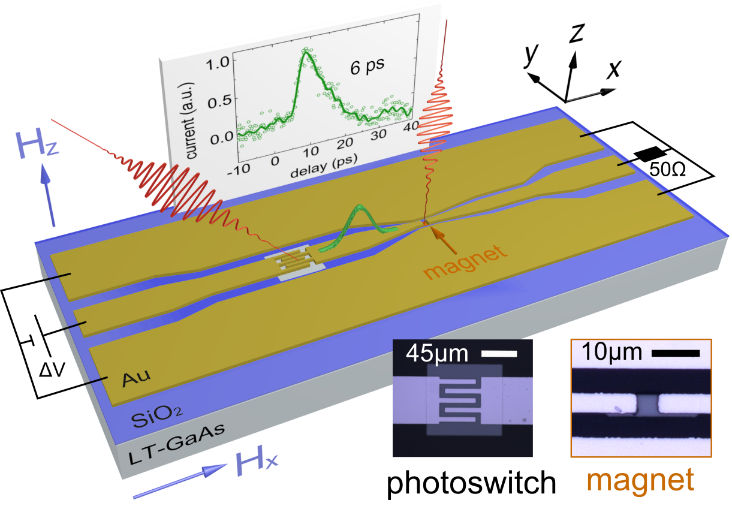
Ultrafast (THz) Spintronics
We are using intense picosecond (THz) current pulses on-chip to study magnetization dynamics and push spintronics into unexplored regimes. Observing spin dynamics via these methods allows for a completely new view into the underlying physical mechanisms, potentially leading to alternative, faster and more energy efficient applications. As a highlight, we recently demonstrated a full spin-orbit torque induced switching of a ferromagnet’s magnetization via single 6 ps electrical pulses.
Ultrafast Magnetization Dynamics
In our team, we aim at understanding the complexity of laser induced magnetization dynamics in a large variety of materials, i.e. metallic thin films and multilayers, rare earth and transition metal alloys, magnetic oxides and heterostructures… The goal is to study at different timescales the interactions responsible for the magnetization dynamics in order to control it and make it useable for the development of innovative devices.

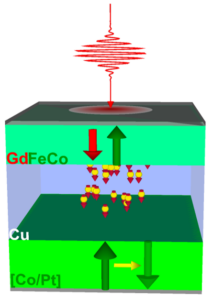
Ultrafast Hot-electrons
The continuous demand for energy efficient and faster data transport and processing has triggered intense research activities and the emergence of a new field combining ultrafast optics, nanomagnetism and spin electronics. In our group, we focused on controlling and using femtosecond hot-electron pulses generated by the absorption of an intense laser pulse to manipulate the magnetization on the ultrafast timescale. Therefore, we demonstrated single electronic pulse driven deterministic switching of the magnetization of magnetic layers embedded in metallic multilayers. This is a major step toward future developments of ultrafast spintronic systems.

